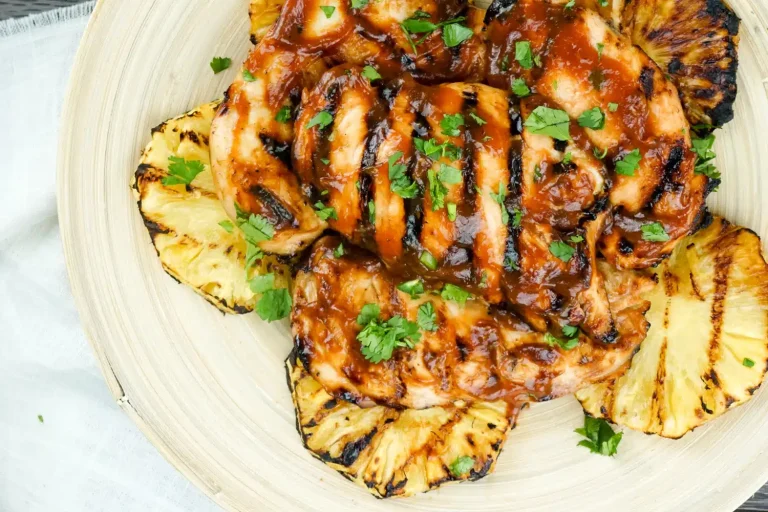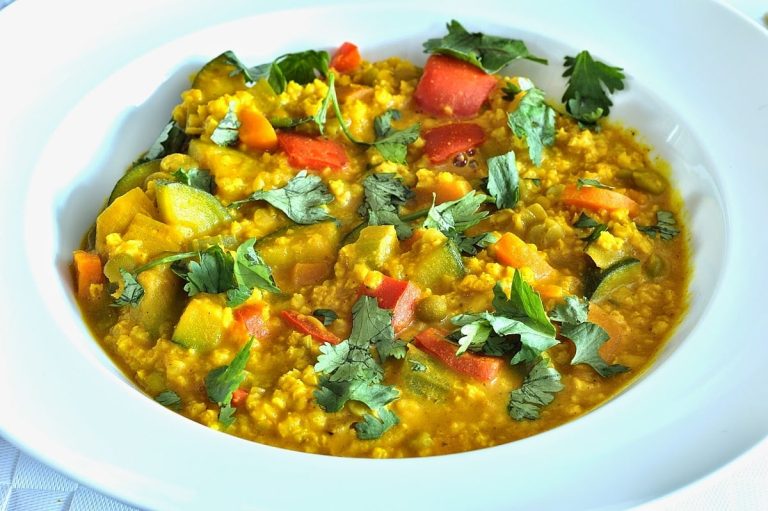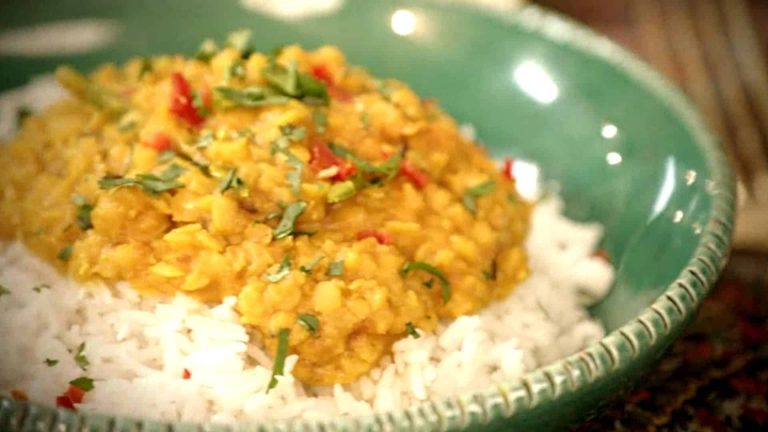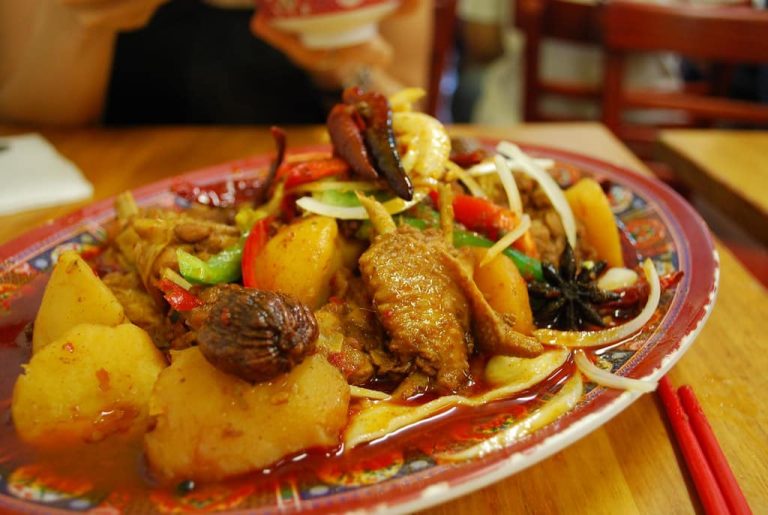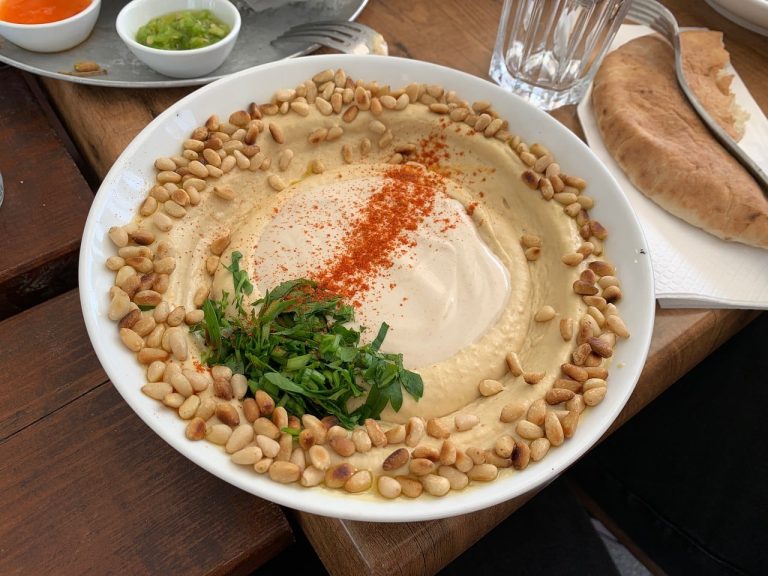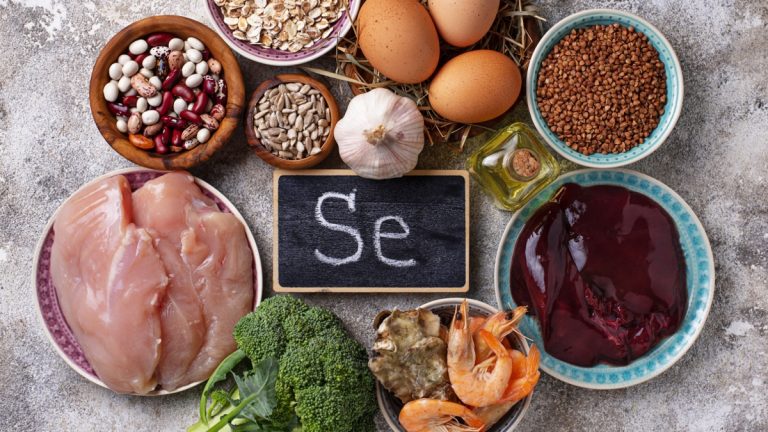Are you looking for what to serve with Grilled Pineapple Chicken to make your dinner more than just ordinary?
Who doesn’t love the combination of sweet pineapple and savory chicken? With this healthy and tasty dish, you can impress your family and friends.
Shaking up our usual menu at the dinner table is always nice.
Regarding meal planning, what to serve with Grilled Pineapple Chicken offers exciting flavors with its combination of succulent grilled chicken flavored with a sweet and tangy glaze of pineapple.
It is an easy one-pan meal with minimal effort yet maximum flavor.
For those seeking a unique but delicious dinner idea, what to serve with Grilled Pineapple Chicken to your summer menu is worth considering!
Some side dishes complement its flavors perfectly to get the most out of this scrumptious dish.
With these as what to serve with Grilled Pineapple Chicken together, you can treat yourself and your loved ones to a zesty and delicious feast!
1. Grilled Balsamic Pears
Grilled Balsamic Pears are first on our list of what to serve with Grilled Pineapple Chicken.
It is an amazing accompaniment to any grilled pineapple chicken recipe. They add a subtly sweet and tangy flavor that truly elevates the dish.
To make them, cut two ripe pears into 8 equal slices and brush each slice with olive oil. Grill for about two minutes on each side until golden brown and tender.
Then, brush over some balsamic vinegar, sprinkle on some chopped fresh basil or mint leaves, a pinch of cracked black pepper, and salt, as desired.
Serve these tasty pears alongside what to serve with Grilled Pineapple Chicken to impress your guests!
2. Watermelon Salad
Watermelon salad is also on our list of what to serve with Grilled Pineapple Chicken. It is the perfect side to pair with grilled pineapple chicken and make a summer-themed meal.
This simple but delicious salad combines fresh and juicy watermelon chunks, crisp cucumbers, crumbly feta cheese, tangy red onions, and a light dressing of lemon juice, olive oil, and honey.
The sweetness from the watermelon pairs deliciously with the slightly smoky flavor of the grilled pineapple chicken for a lovely, balanced meal that will have everyone’s mouth watering.
Serve it as a light lunch on its own or as part of a larger meal to impress your guests!
3. Roast Wild Rice Pilaf
Roast wild rice pilaf is the perfect accompaniment to grilled pineapple chicken.
Wild rice brings a robust, slightly chewy texture to this scrumptious side dish, mixing with a flavorful blend of onions, garlic, and fresh parsley.
A touch of olive oil adds flavor and richness as it bakes in the oven.
To assemble, cook wild rice according to package directions; rinse with cold water in a colander and drain.
Saute onions and garlic in olive oil for about 4 minutes until softened. Stir together the cooked wild rice, prepared vegetables, and fresh parsley.
Spread on a non-stick sheet pan and drizzle with olive oil before baking at 350°F for 25 minutes or until lightly golden browned.
RoastWild Rice Pilaf beautifully balances the sweet taste as what to serve with Grilled Pineapple Chicken – it’s an unforgettable meal you’ll want to make again and again!
4. Roasted Baby Carrots
Roasted baby carrots are perfect for what to serve with Grilled Pineapple Chicken because they are so easy to prepare and flavorful.
Roasting highlights the sweetness of the carrots while adding a slight smokiness.
Carrots also provide additional nutrition to the dish, as they contain vitamins A, K, B6, and C and minerals like iron, phosphorus, and calcium.
To make roasted baby carrots, coat them in extra-virgin olive oil, season with salt and pepper, and roast at 400 degrees for about 20 minutes or until lightly caramelized.
Use what to serve with Grilled Pineapple Chicken for a tasty and healthy meal that’s sure to be a hit!
5. Cauliflower Mac and Cheese
Cauliflower Mac and Cheese is a great dish with grilled pineapple chicken.
It has a creamy cheese sauce that perfectly complements the sweetness of the grilled pineapple in the chicken.
The cauliflower adds texture and nutrition, making it a healthier alternative to traditional mac and cheese.
Cauliflower Mac and Cheese can also be made with fresh herbs, like rosemary or thyme, for an added layer of flavor.
To make it even more delicious, add small pieces of crispy bacon or toasted walnuts on top for an added crunch!
Serve this delicious dish with grilled pineapple chicken for a healthy, flavorful meal that everyone will enjoy.
6. Roasted Brussel Sprouts
Roasted Brussels Sprouts are a delicious side dish with grilled pineapple chicken.
The Brussels sprouts are first boiled in salted water before being roasted in oil, and the roasting brings out their sweet flavor, which pairs deliciously with the flavor of the grilled pineapple chicken.
The Grilled Pineapple Chicken combination also provides a healthy dose of Omega 3 fatty acids, rich in dietary fiber, vitamin A, Vitamin C, and antioxidants.
Roasted Brussel Sprouts give your grilled pineapple chicken an extra layer of texture and crunch that will have everyone wanting more.
It makes for a complete and balanced one-plate meal that everyone will enjoy!
7. Garlic Parmesan Scalloped Potatoes
Garlic Parmesan Scalloped Potatoes are the perfect accompaniment to grilled pineapple chicken.
They offer a warm, creamy side dish with savory flavors that perfectly balance out the sweetness of the pineapple.
The potatoes are cooked in a buttery, cheesy sauce with cream, garlic, and plenty of parmesan cheese.
The result is a rich yet comforting side dish that’s sure to be loved by everyone at the dinner table!
This easy option is also incredibly versatile: alter the seasonings or add extra elements like fresh herbs for an even more flavorful dish.
Serve Garlic Parmesan Scalloped Potatoes what to serve with Grilled Pineapple Chicken for a delicious and complete meal that’s sure to please!
8. Soft Asparagus
Soft asparagus is the perfect side dish to pair with grilled pineapple chicken.
Not only does it offer a savory, flavorful contrast to the sweetness of the pineapple, but its texture also works well in balancing out the texture of the chicken.
Asparagus can be quickly cooked on a grill or pan with oil and seasoning to bring out its delicious flavor.
Additionally, asparagus is high in vitamins A and C, fiber, and essential minerals like calcium and iron – making it a healthy addition to any meal.
Serve your grilled pineapple chicken on a bed of soft asparagus for an unbeatable combination of flavors!
9. Creamy Spaghetti Squash
Creamy Spaghetti Squash is next on our list of what to serve with Grilled Pineapple Chicken. This creamy and delicious dish offers flavor and nutrition, making it a hit with any meal.
Cooked spaghetti squash offers a positive balance of sweet and savory flavors, contrasting the bright sweetness of grilled pineapple chicken.
The tender strands of spaghetti squash mingle perfectly with the robust flavors of the grilled chicken, making each bite even more enjoyable.
Furthermore, spaghetti squash provides considerable amounts of vitamin A, vitamin C, and fibers adding even more benefits to this already outstanding side dish.
So if you’re searching for an interesting but surprisingly easy side dish that perfectly matches your grilled pineapple chicken, creamy spaghetti squash is worth trying!
10. Stuffed Sweet Potatoes
Stuffed sweet potatoes are the perfect complement to grilled pineapple chicken.
They provide a delicious flavor contrast with the smoky, spicy notes of the grilled chicken, and they are also nutritious and rich in fiber and complex carbs.
Additionally, sweet potatoes can be cooked in different ways depending on your taste preferences: baked or microwaved, mashed and skinned, or kept peeled, giving you ample options for how to cook them to suit your menu best.
Stuffed sweet potatoes pair excellently with grilled pineapple chicken because when cooked together, their flavors combine to make a mouthwatering dish that will surely please any dinner guest.
11. Cauliflower Fried Rice
Cauliflower Fried Rice is the perfect accompaniment to grilled pineapple chicken.
Its low-carb yet still flavorful deliciousness makes it a great option for those looking for what to serve with Grilled Pineapple Chicken but don’t want to sacrifice flavor.
It’s rich in antioxidants which aid the body in fighting off disease and reducing oxidative stress.
It also has high levels of dietary fiber, which aids in digestion and blood sugar control.
Cauliflower Fried Rice can be easily customized with whatever spices, nuts, and vegetables you have on hand, making it a versatile and convenient dish that your guests will love.
Serve this tasty side dish alongside your grilled pineapple chicken for a delectable main course that everyone can enjoy!
12. Hawaiian Baked Beans
Hawaiian Baked Beans are a great side dish with grilled pineapple chicken.
The rich flavor of this classic baked bean dish, combined with its sweetness and slight spiciness, pairs perfectly with the tropical fruit flavors in the grilled chicken.
Hawaiian Baked Beans are also easy to prepare: they typically begin with canned beans simmered in a sauce made from garlic, onion, pineapple juice, soy sauce, and brown sugar.
This gives the beans a deep and complex flavor that will complement both the sweet and savory notes of the chicken.
Perfect for an outdoor summer gathering, this what to serve with Grilled Pineapple Chicken will keep your guests coming back for more.
13. Hawaiian Fried Rice
Hawaiian Fried Rice is the perfect side to go with grilled pineapple chicken.
It has a mild, coconut-scented flavor with the sweetness of pineapple chunks and the crunch of diced red pepper.
Onions, garlic, and ginger add depth of flavor, while peas make it brightly colored and nutritious.
This dish can be served hot or chilled, allowing you to make it ahead of time if necessary.
Serve as a side with your favorite grilled chicken or fish dish for an amazing meal you’ll want to make repeatedly. Hawaiian Fried Rice is sure to become a family favorite!
14. Peanut Butter Cookies
Peanut Butter Cookies are last on our list of what to serve with Grilled Pineapple Chicken. It is a sweet and tasty accompaniment to grilled pineapple chicken.
The slightly salty, crunchy cookie pairs perfectly with the subtle sweetness of the grilled pineapple, creating a flavor combination that is hard to beat.
Peanut Butter Cookies also bring some textural contrast to the dish; their chewy, nutty goodness offers a different kind of pleasure than what you get from the juicy, tangy flavors of the grilled fruit.
Serve these cookies alongside your next batch of what to serve with Grilled Pineapple Chicken, and your guests will surely be delighted!
Conclusion
Grilled pineapple chicken is a delicious dish that can be served with any number of sides.
Depending on personal preference, it can go well with different starch-based sides such as potatoes or grains, a fresh salad, or other side dishes like roasted vegetables or sauteed greens.
For those looking for what to serve with Grilled Pineapple Chicken a little different, grilled pineapple chunks can even accompany the dish for a sweet and savory combination.
With what to serve with Grilled Pineapple Chicken options, grilling some pineapple chicken is sure to complete any meal.
